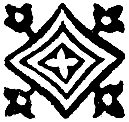
George Frideric Handel
HERBERT F. PEYSER

Written for and dedicated to
the
RADIO MEMBERS
of
THE PHILHARMONIC-SYMPHONY SOCIETY
of NEW YORK
Copyright 1951
THE PHILHARMONIC-SYMPHONY SOCIETY
of NEW YORK
113 West 57th Street
New York 19, N. Y.

HANDEL IN MIDDLE AGE.
From the Portrait by Kneller.
FOREWORD
Handel’s long career resembles a gigantic tapestry,so bewilderingly crowded with detail, so filled withturmoil and vicissitude, with vast achievements,extremes of good and ill fortune, and unending comingsand goings that any attempt to force even a smallpart of it into the frame of a tiny, unpretentious bookletof the present sort is as hopeless as it is presumptuous.Handel is far more difficult to reduce to suchminuscule dimensions than his greatest contemporary,Bach, whose worldly experiences were infinitely lessdiverse and colorful, for all the sublimity, mysticalquality and epochal influence of his myriad creations.The supreme master of florid pomp, Handel bulkedmuch larger in the perspective of his own day thandid, in his, the composer of the “Passion Accordingto St. Matthew.” In spite of an everlasting monumentlike “Messiah,” the most popular choral masterpieceever written, we may, however, ask ourselves if thebody of Handel’s music is as widely known and asintimately studied as it deserves to be. How manytoday can boast of a real acquaintance with Handel’soperas (there are more than forty of them alone)apart from a few airs sung in concert; how many cantruly claim to know by experience any of the greatoratorios apart from “Messiah” and, possibly, “JudasMaccabaeus” and “Israel in Egypt?” Yet outside ofsuch monumental works, Handel was time and againa composer of exquisitely delicate colorations, andsensuous style, not to say a largely unsuspected masterof many subtle intricacies of rhythm. The presentpamphlet, wholly without originality or novelty ofapproach, may, perchance, induce the casual readerto renew his interest in Handel’s prodigious treasury,so much of it neglected, not to say actually undiscoveredby multitudes of music lovers.
H. F. P.
George Frideric Handel
By
HERBERT F. PEYSER
Some wit, comparing Bach and Handel, remarkedthat both masters were “born in the same year andkilled by the same doctor.” Born in the same yearthey unquestionably were, Handel almost an exactmonth before his great contemporary. Halle, whereHandel first saw the light, is a comparatively shortdistance from Eisenach, where Bach was cradled. Itlies not far from the eastern boundary of that Saxon-Thuringiancountry which harbored some of the imposingmusical figures of Germany during the 17thCentury. Such names as those of the famous “threeS’s”—Schein, Scheidt and Schütz—of Kuhnau,Krieger, Melchior Franck, Ahle, Rosenmüller, echopowerfully through the history of that period.
George Frideric Handel was born on Monday,February 23, 1685. That the name has been variouslyspelled need not trouble us; strict cons